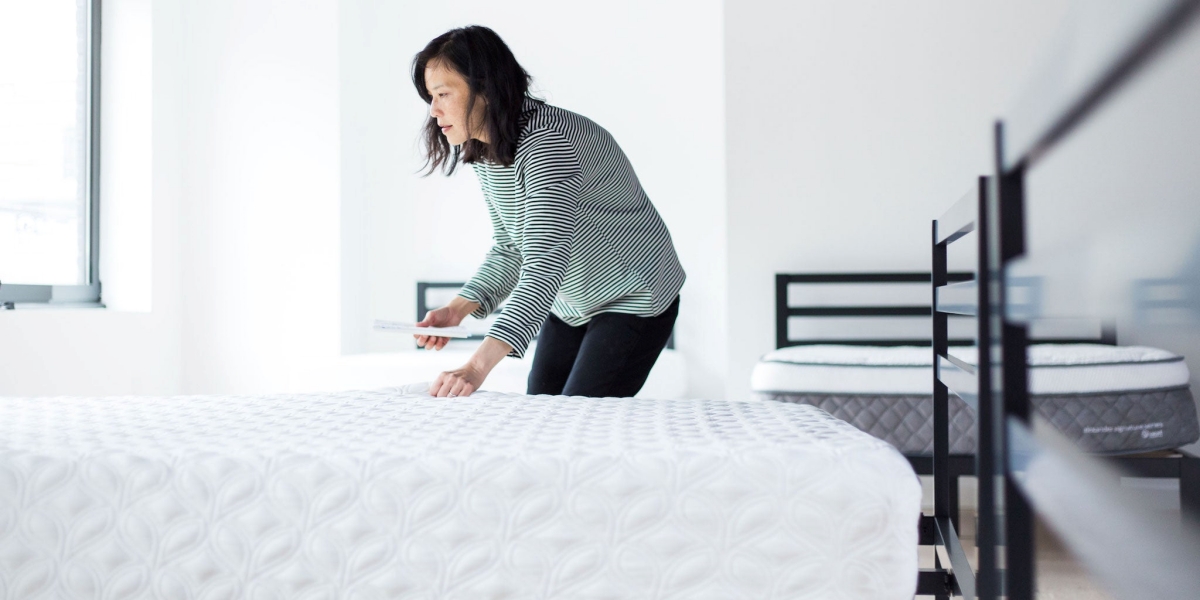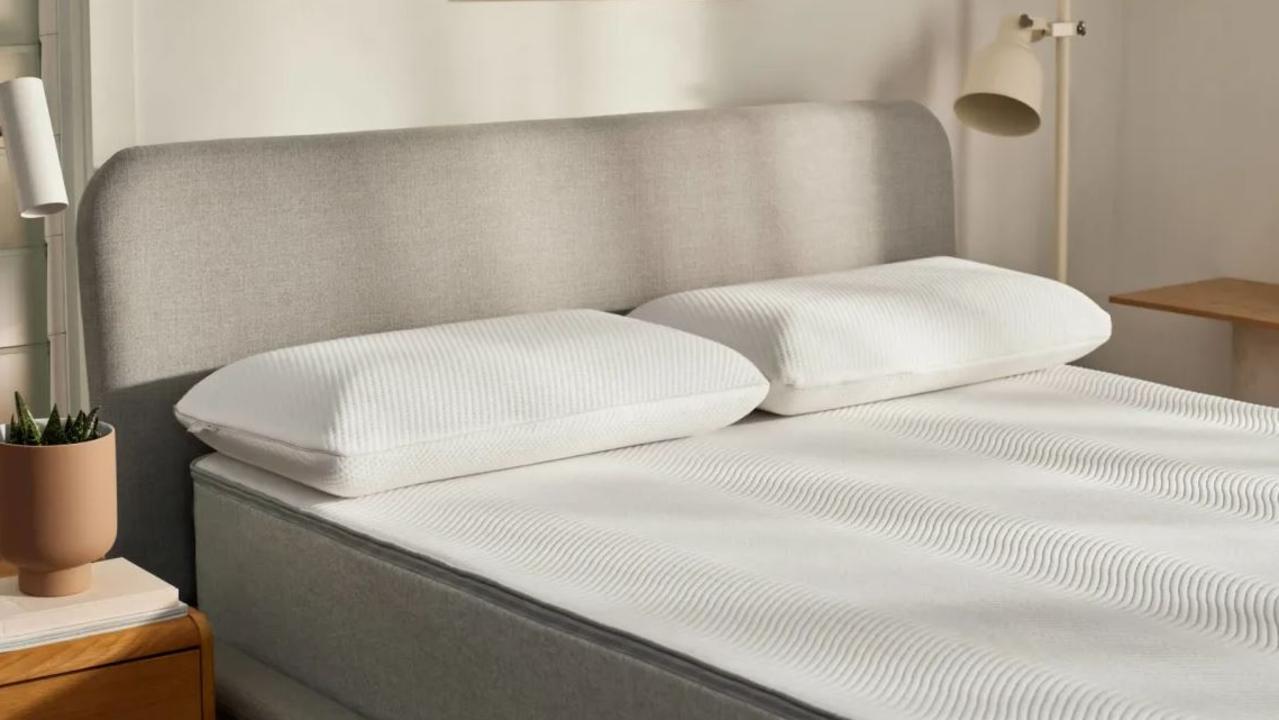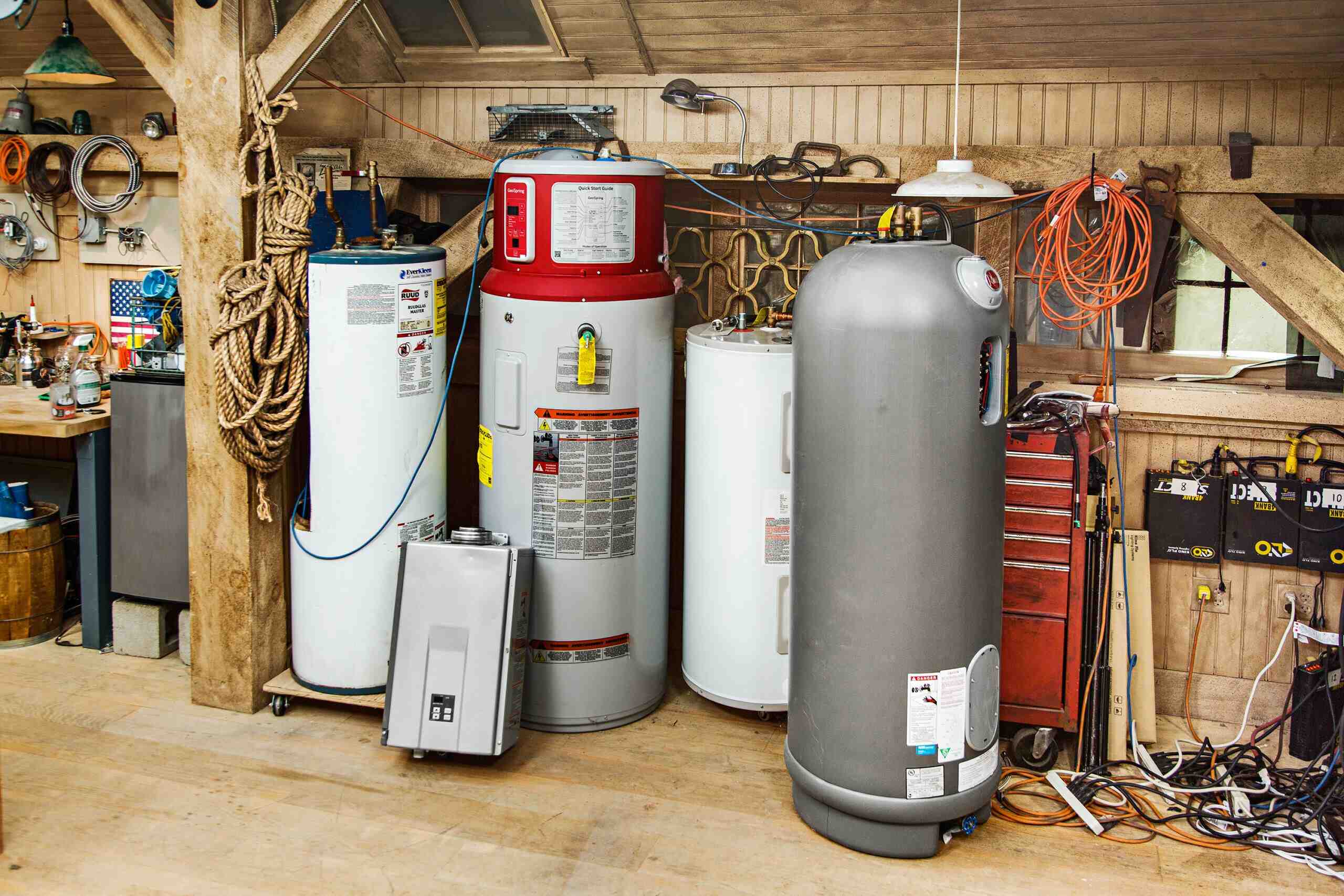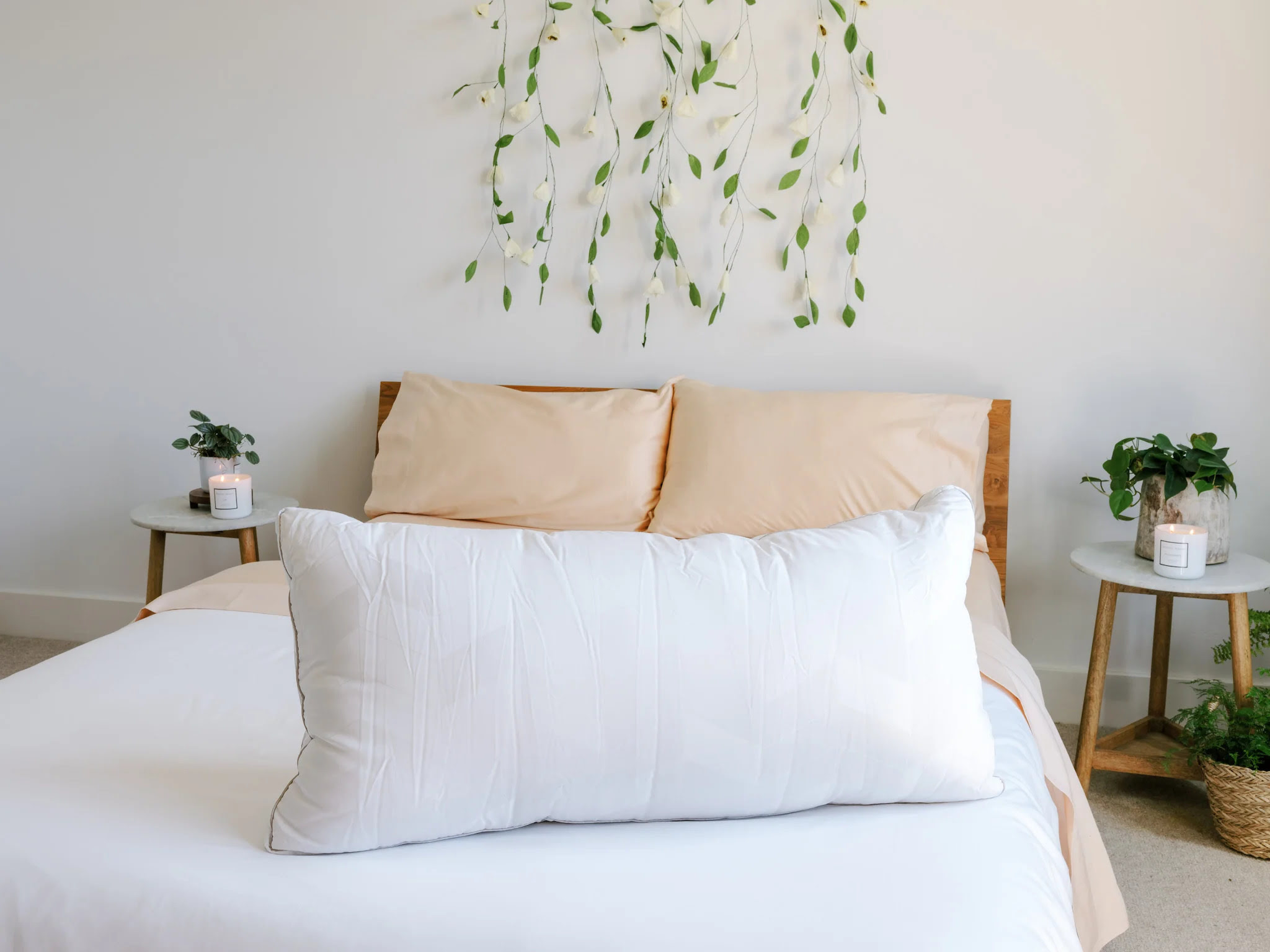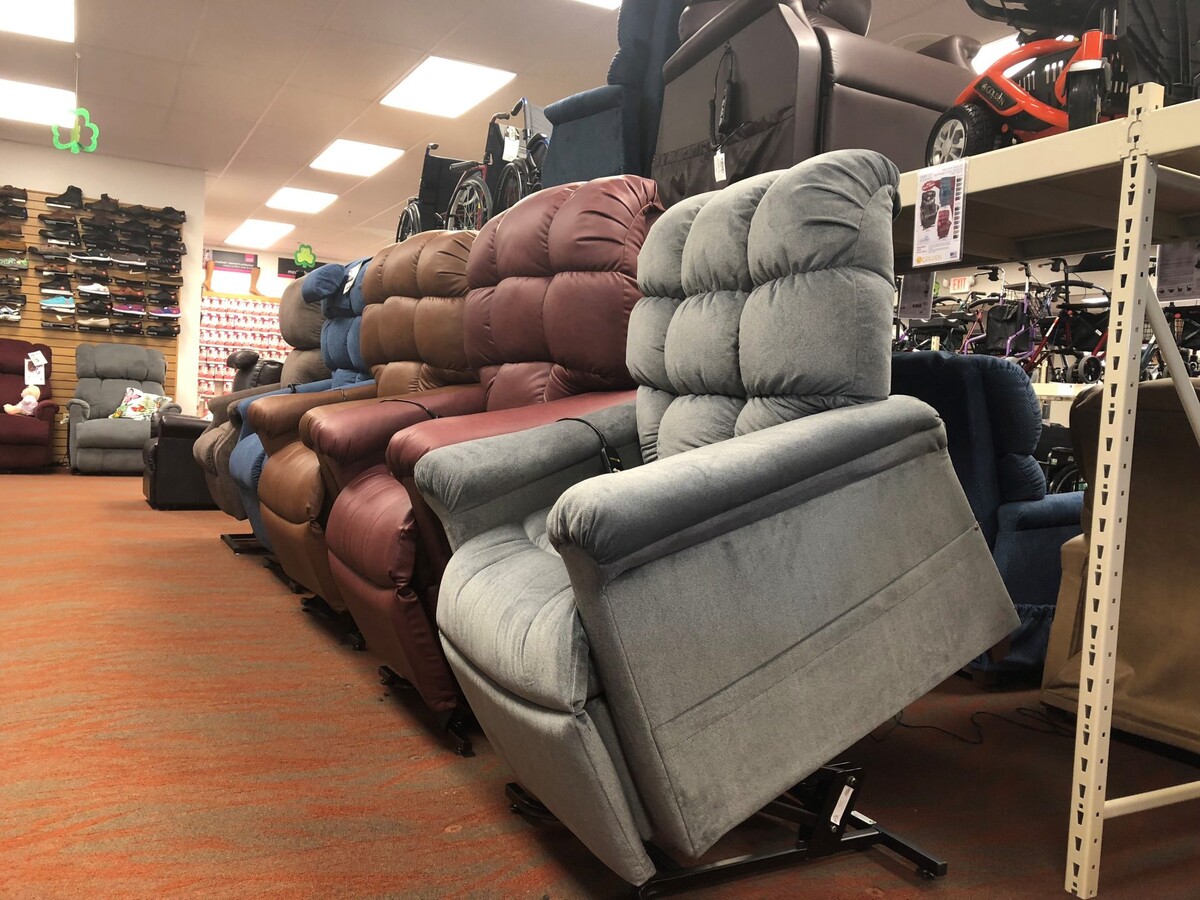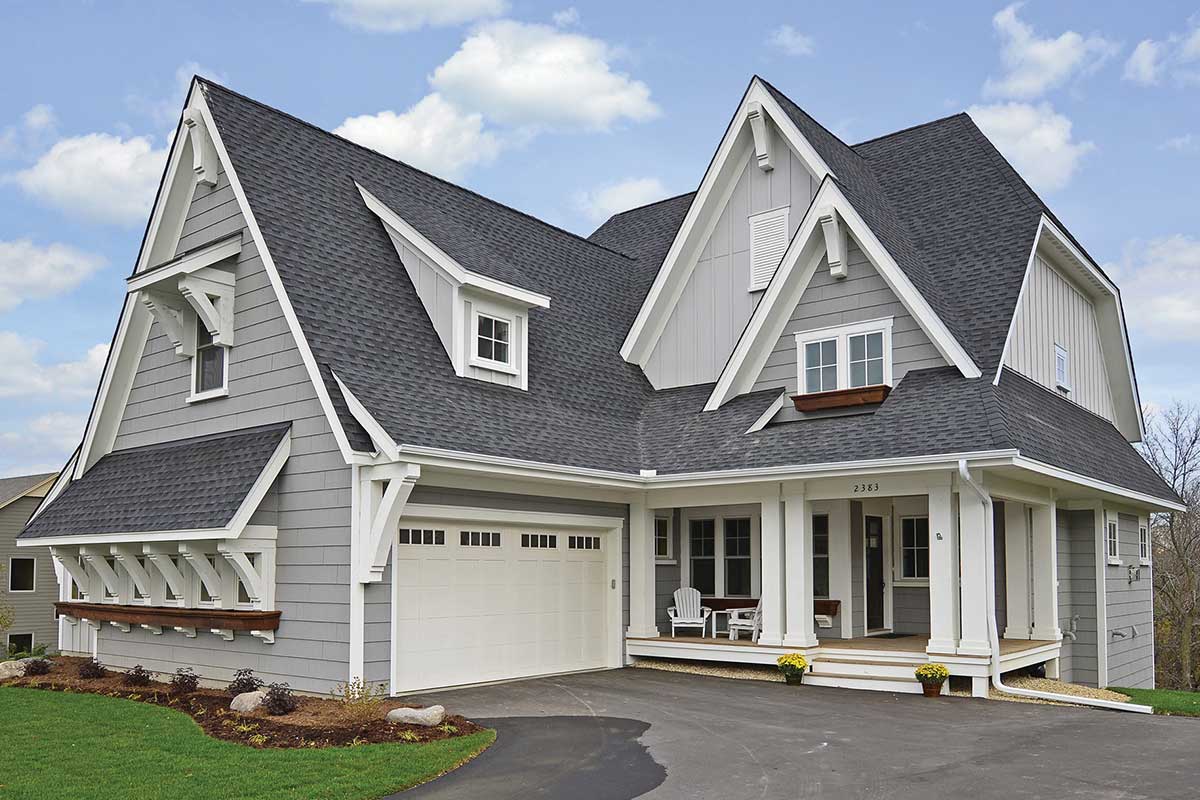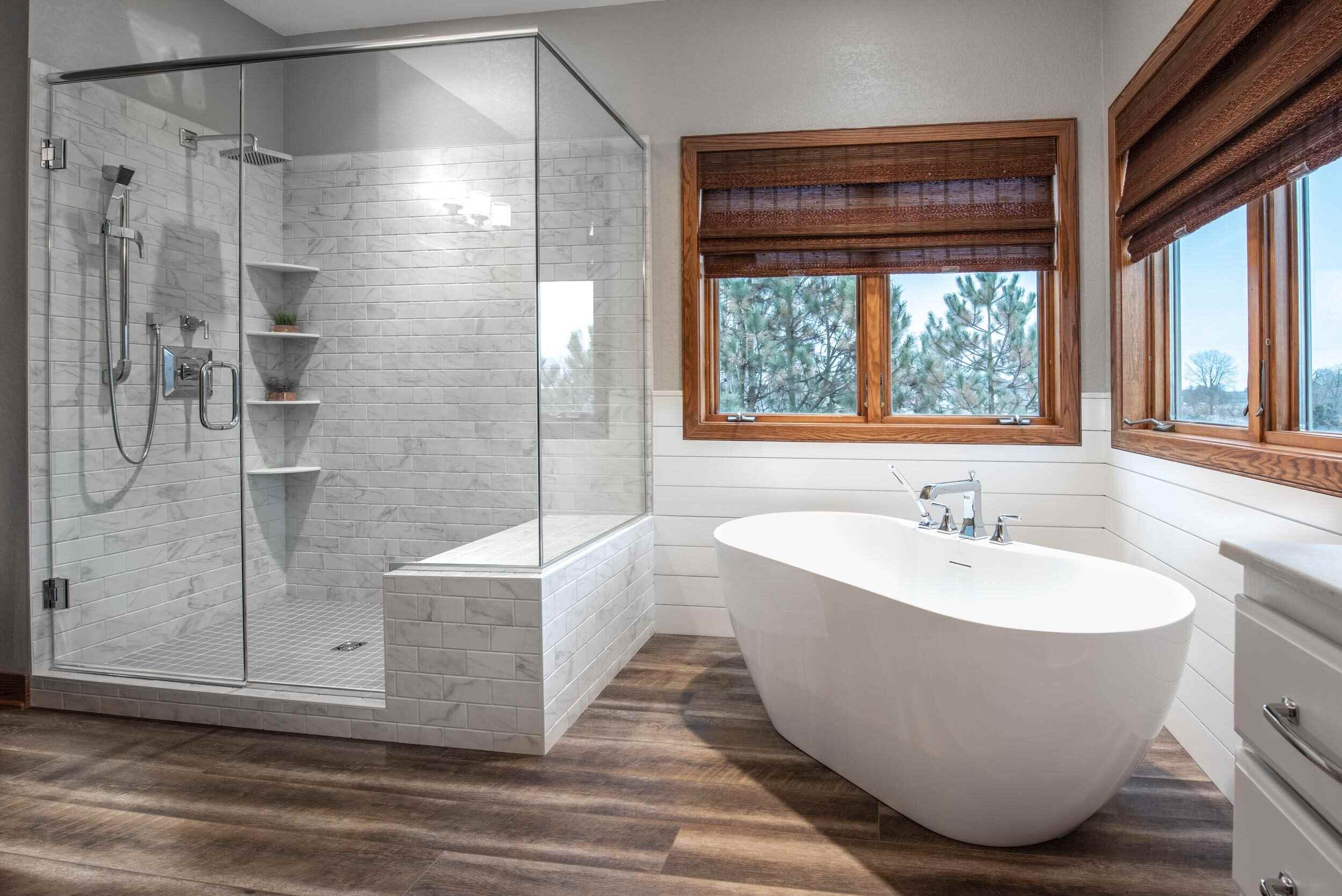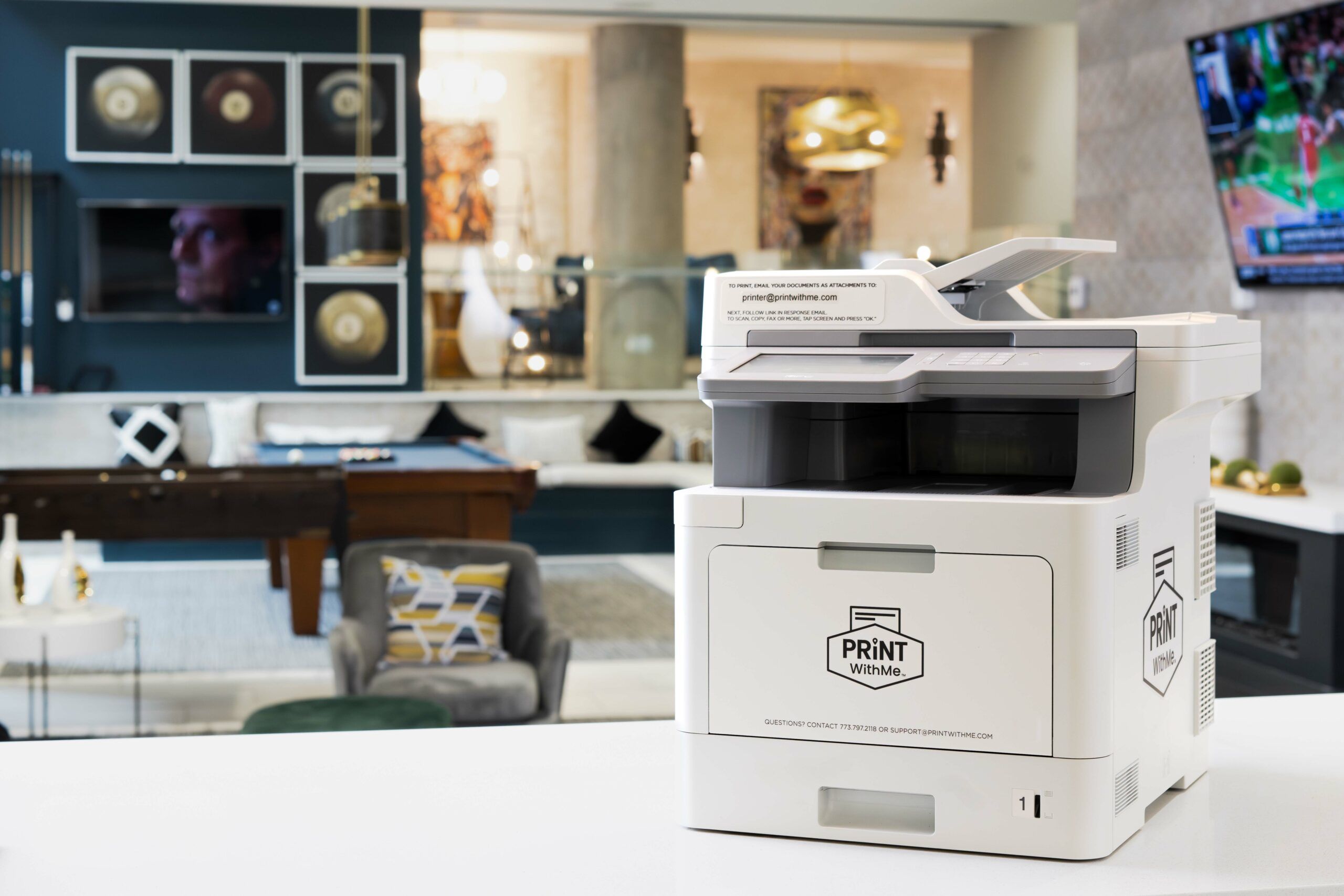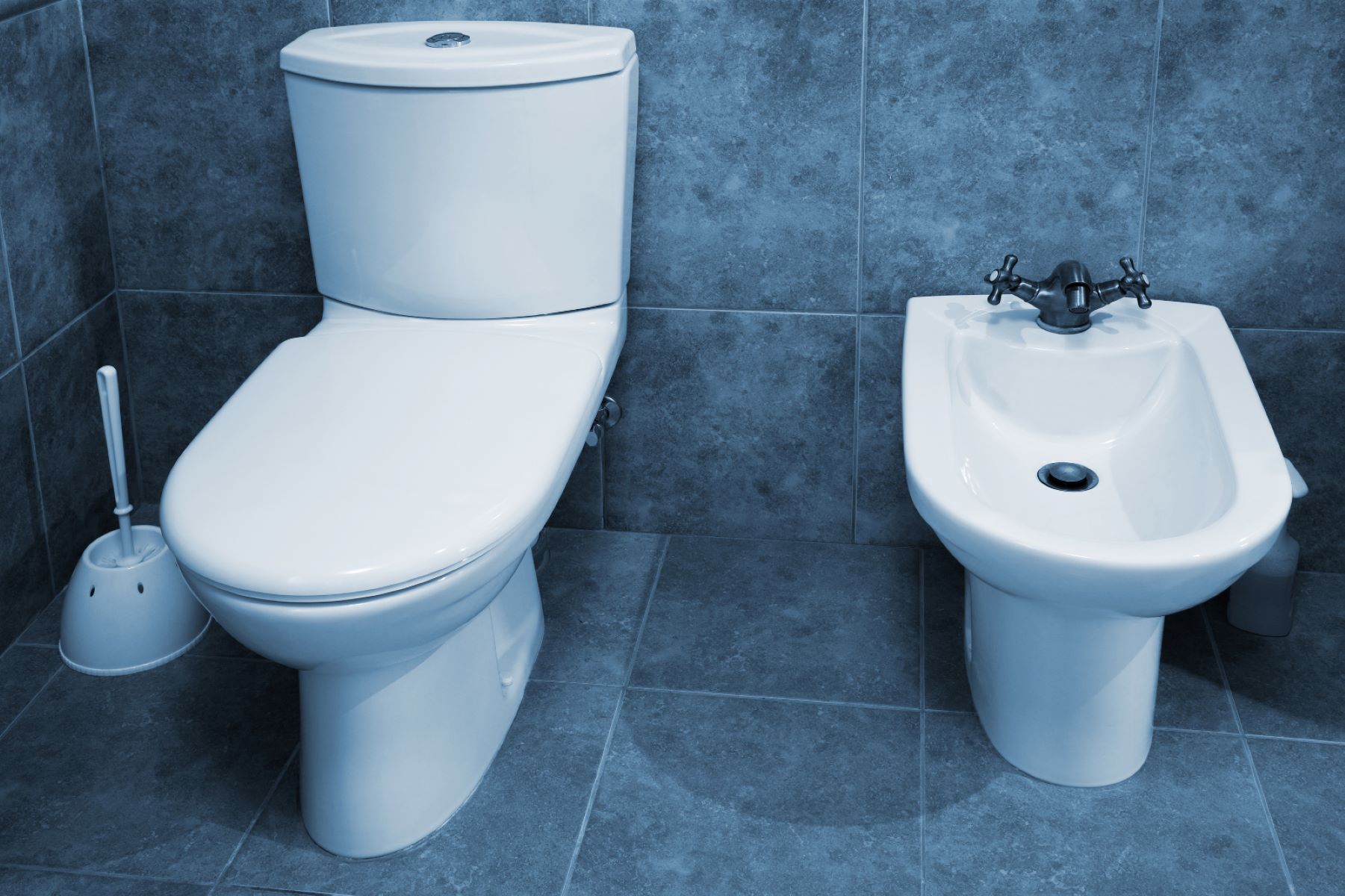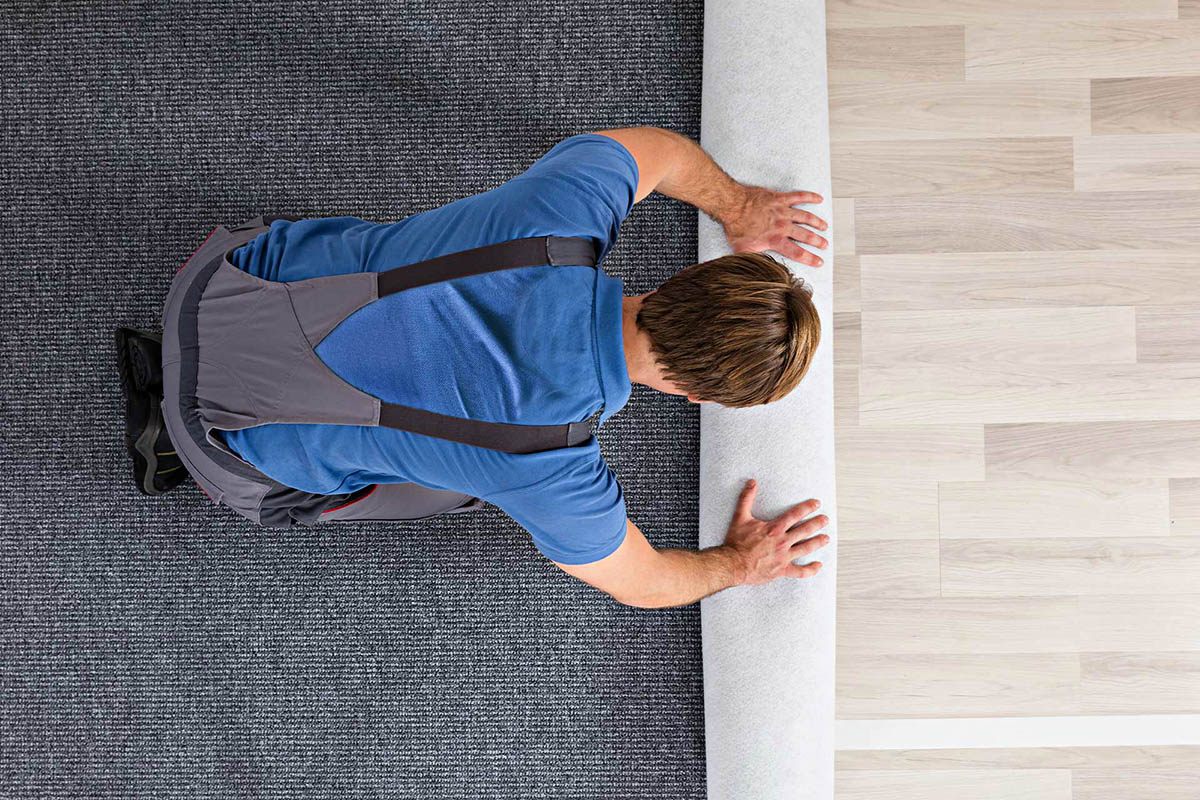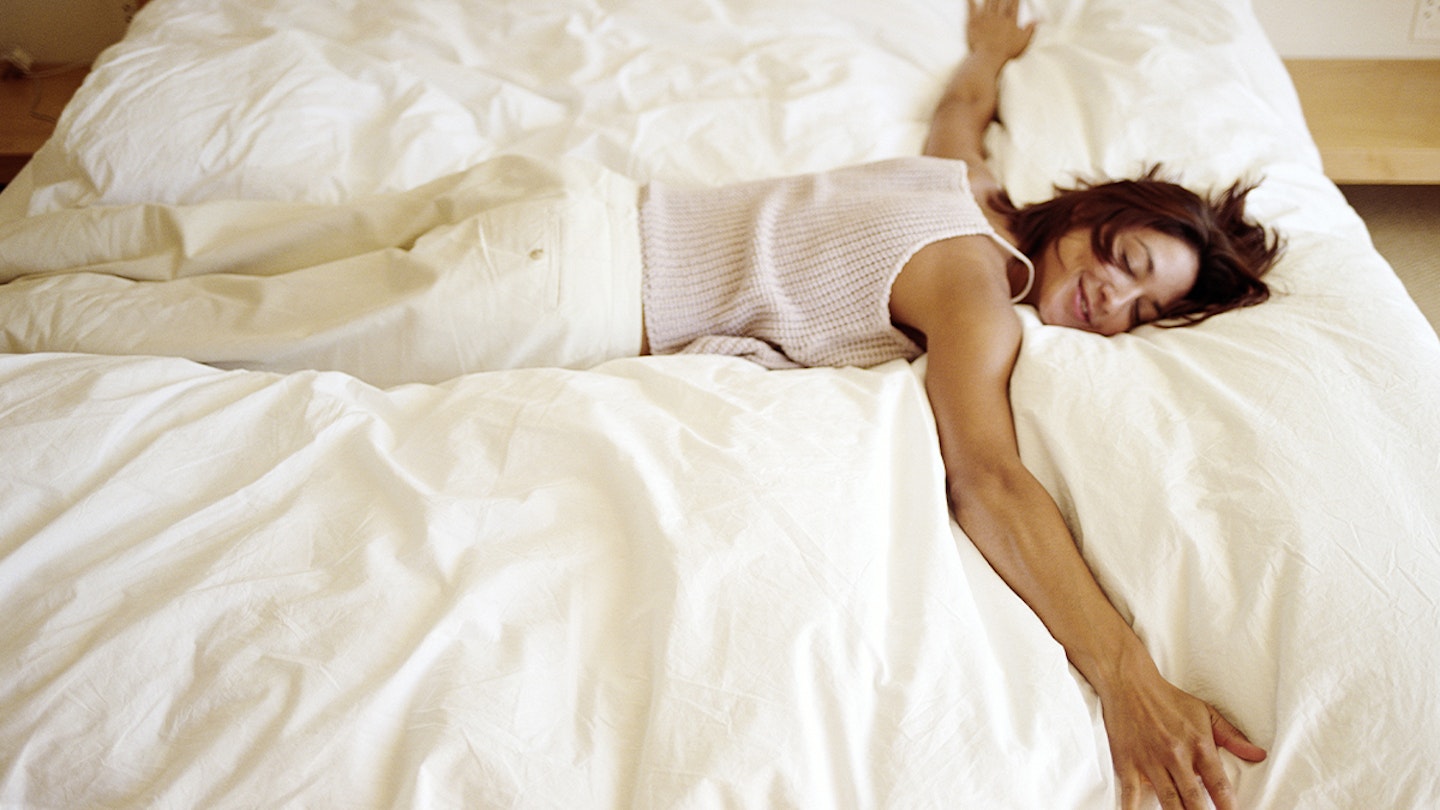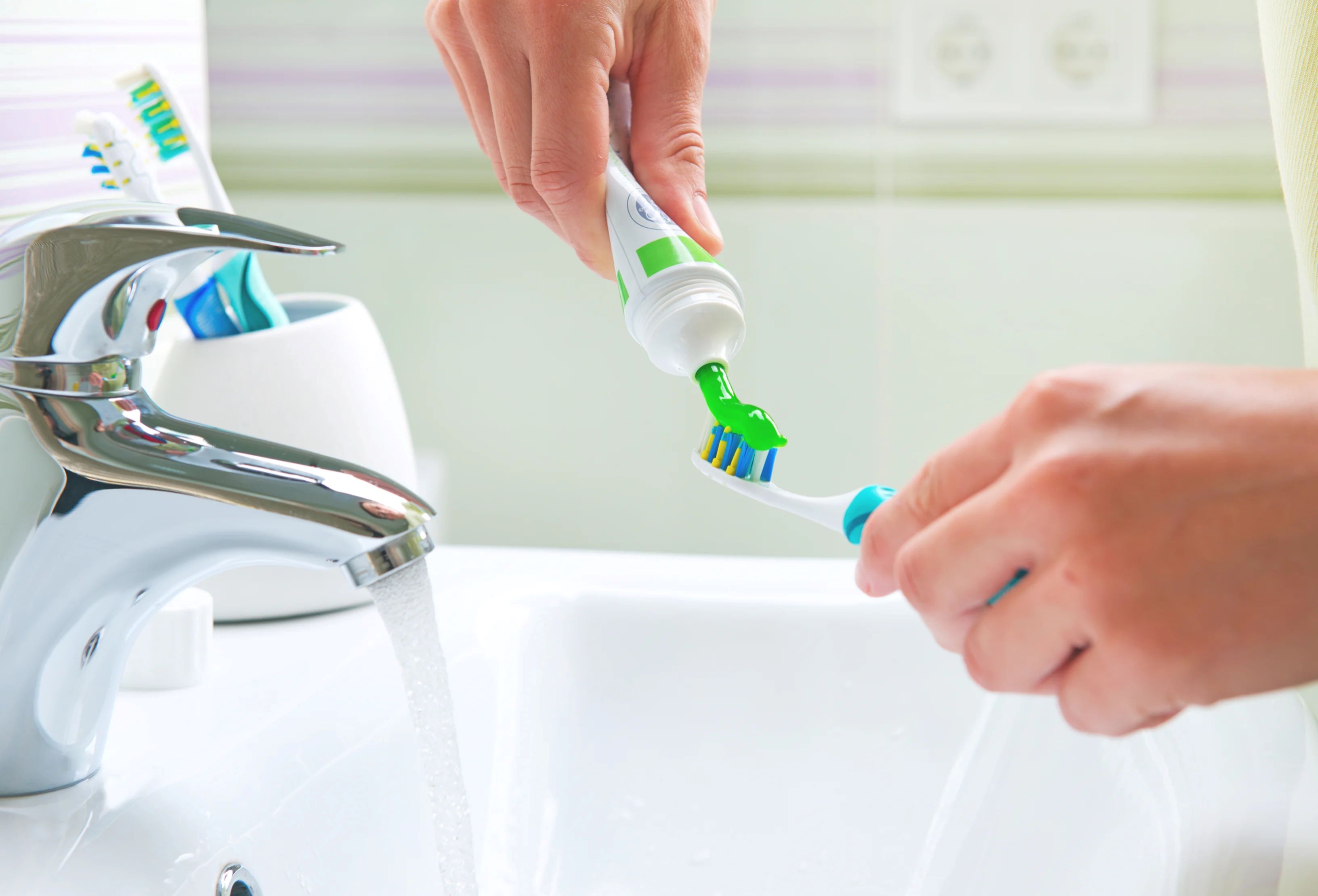Home>Furniture>Bedroom Furniture>How To Choose A Mattress Protector
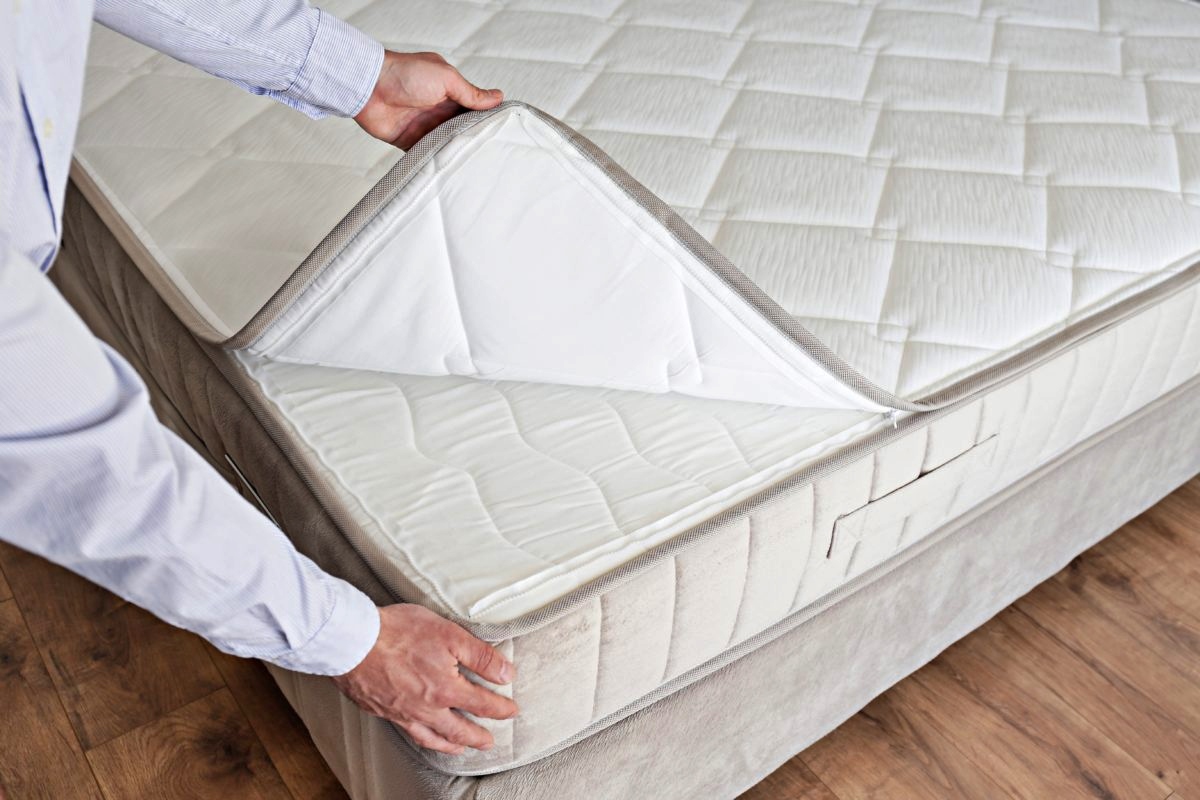

Bedroom Furniture
How To Choose A Mattress Protector
Modified: September 1, 2024
Learn how to choose the perfect mattress protector for your bedroom furniture. Protect your investment and ensure a comfortable sleep environment.
(Many of the links in this article redirect to a specific reviewed product. Your purchase of these products through affiliate links helps to generate commission for Storables.com, at no extra cost. Learn more)
Introduction
When it comes to creating the optimal bedroom retreat, a good mattress is just the beginning. To truly protect your investment and prolong the life of your mattress, a mattress protector is an essential accessory. A mattress protector serves as a barrier between your mattress and potential threats like spills, stains, allergens, dust mites, and bed bugs.
In this article, we will explore the importance of using a mattress protector and provide a comprehensive guide on how to choose the right one for your needs. With the myriad of options available on the market, understanding the key factors to consider can help you make an informed decision and ensure you select a mattress protector that meets your specific requirements.
Additionally, we will discuss the different types of mattress protectors, sizing considerations, the benefits of waterproof and breathable options, material choices, allergen protection features, ease of cleaning and maintenance, pricing ranges, and the importance of reading customer reviews and ratings.
By the end of this article, you will have all the information you need to confidently choose a mattress protector that shields your mattress from spills, stains, and allergens while enhancing your overall sleep experience.
Key Takeaways:
- Protect your mattress investment and ensure a healthier sleep environment by choosing a well-fitted, hypoallergenic mattress protector with easy maintenance and positive customer reviews.
- Consider factors such as material, sizing, and allergen protection features to select a mattress protector that meets your specific needs and enhances the longevity of your mattress.
Read more: How To Choose A Mattress
Importance of a Mattress Protector
A mattress is a significant investment, and protecting it should be a priority. A mattress protector acts as the first line of defense against spills, stains, allergens, dust mites, and even bed bugs. Here are some key reasons why using a mattress protector is essential:
- Spill and stain protection: Accidents happen, whether it’s a spilled drink, pet accidents, or a child’s mishap. A mattress protector creates a barrier that prevents liquids from seeping into the mattress, which can cause stains, odor, and even mold or mildew growth.
- Allergen prevention: Dust mites, pet dander, and other allergens can accumulate in your mattress over time. A mattress protector with allergen protection features can help minimize exposure to these particles, reducing the risk of allergic reactions and respiratory issues.
- Bed bug prevention: Bed bugs can infest even the cleanest of homes. A mattress protector with bed bug protection can help prevent these pests from burrowing into your mattress, providing an extra layer of defense against infestations.
- Prolonged mattress lifespan: A quality mattress is an investment that should last for years. By using a mattress protector, you can prevent wear and tear, including bed sagging and mattress deterioration. This helps extend the lifespan of your mattress, allowing you to enjoy comfortable and restful sleep for a longer time.
- Hygiene and cleanliness: Mattresses can accumulate sweat, oils, and dead skin cells over time, creating an ideal environment for bacteria to thrive. A mattress protector acts as a barrier, preventing these elements from reaching the mattress surface and making it easier to maintain a clean and healthy sleep environment.
By using a mattress protector, you not only safeguard your investment but also ensure a cleaner, healthier, and more comfortable sleep environment. With the right mattress protector in place, you can sleep soundly knowing that your mattress is protected from the potential threats that can impact its performance and longevity.
Factors to Consider When Choosing a Mattress Protector
Choosing the right mattress protector requires careful consideration of various factors. Here are some key factors to keep in mind when selecting a mattress protector:
- Size and fit: Ensure that you choose a mattress protector that matches the size of your mattress. Consider the depth of your mattress as well to ensure a proper fit. A well-fitted protector will stay in place and provide effective coverage.
- Protection level: Determine the level of protection you need. If you’re concerned about spills and stains, opt for a waterproof mattress protector. For added comfort and breathability, consider a breathable option that still provides protection against allergens and dust mites.
- Material: The material of the mattress protector can greatly impact its comfort and performance. Look for options that are soft, hypoallergenic, and breathable. Common materials used for mattress protectors include cotton, polyester, bamboo, and vinyl.
- Ease of cleaning: Choose a mattress protector that is easy to clean. Look for options that are machine-washable and dryer-friendly. This will make it convenient to maintain the hygiene and freshness of your protector.
- Durability: Consider the durability of the mattress protector. Look for features like strong stitching, reinforced edges, and a warranty to ensure that your investment will last over time.
- Allergen protection: If allergies are a concern, select a mattress protector that is specifically designed to block allergens. Look for features like a tight weave and allergen barrier technology that can prevent dust mites, pet dander, and other allergens from entering your mattress.
- Noise level: Some mattress protectors can produce noise when you move on them. If noise is a concern, opt for a protector that is noiseless or has minimal noise to ensure a peaceful sleep experience.
By considering these factors, you can narrow down your options and choose a mattress protector that suits your specific needs and preferences. Remember that finding the right mattress protector is essential to enhance the comfort, hygiene, and longevity of your mattress.
Types of Mattress Protectors
Mattress protectors come in a variety of types, each offering unique features and benefits. Understanding the different types can help you select the right one for your needs. Here are the most common types of mattress protectors:
- Fitted Sheet Style: This type of mattress protector fits over the mattress like a fitted sheet. It has elasticized corners that keep it securely in place. Fitted sheet style protectors are easy to install and remove, making them convenient for regular washing.
- Encasement: A mattress encasement provides complete coverage for your mattress. It fully encloses the mattress, zips shut, and creates a barrier against bed bugs, allergens, and dust mites. Encasements are particularly useful for those with allergies or those dealing with bed bug infestations.
- Padded: Padded mattress protectors offer an extra layer of cushioning, providing added comfort and softness. They are ideal for those looking to enhance the comfort of their mattress while still providing protection against spills and stains.
- Quilted: Quilted mattress protectors have a quilted pattern on the surface, which adds an element of style and can help to enhance the overall aesthetic of your bedding. They also provide additional comfort and softness to your mattress.
- Pillow-top: Pillow-top mattress protectors feature an added layer of padding on top, mimicking the feel of a pillow-top mattress. They provide extra cushioning and can be particularly beneficial for older or firmer mattresses that need additional comfort.
- Zipped: Zipped mattress protectors offer full coverage and enclose the mattress entirely. They are especially useful for protecting against allergens and bed bugs, as they completely seal the mattress and prevent any access points.
- Crib mattress protectors: Specifically designed for cribs, crib mattress protectors provide a waterproof and hypoallergenic barrier to protect the delicate mattress from spills, stains, and allergens. They are often made from safe and breathable materials suitable for infants.
Consider the style and features that best suit your needs when choosing a mattress protector. Whether you prefer a fitted sheet style for easy installation or an encasement for maximum protection, there is a mattress protector type available to meet your specific requirements.
Waterproof vs. Breathable Mattress Protectors
When selecting a mattress protector, one important consideration is whether you need it to be waterproof or breathable. Here, we will compare waterproof and breathable mattress protectors to help you decide which option is best for you:
Waterproof Mattress Protectors:
Waterproof mattress protectors are designed to keep your mattress safe from spills, stains, and liquid damage. They have a waterproof layer, typically made of polyurethane or vinyl, that prevents liquids from seeping into the mattress. The waterproof barrier is usually noiseless and breathable, ensuring that your sleep experience remains comfortable.
Waterproof protectors are especially beneficial for individuals who are prone to accidents, have young children or pets, or simply want added protection against spills and stains. They are easy to clean and maintain, as you can simply wipe them down or toss them in the washing machine.
Breathable Mattress Protectors:
Breathable mattress protectors are designed to provide protection against allergens, dust mites, and bed bugs while allowing air to circulate. They are made of breathable materials like cotton, bamboo, or microfiber that promote airflow and ventilation. This helps regulate your body temperature and prevent you from overheating during sleep.
Breathable protectors are ideal for individuals who prioritize comfort and want a cool and refreshing sleep environment. They are particularly suitable for hot sleepers or individuals who live in warmer climates. Breathable protectors also provide a hypoallergenic barrier, minimizing the risk of allergies and respiratory issues.
When choosing between a waterproof and breathable mattress protector, consider your individual needs and priorities. If spills and accidents are a concern, a waterproof protector will provide the necessary protection. However, if you prioritize breathability and temperature regulation, a breathable protector is the way to go.
It is also worth noting that some mattress protectors combine both waterproof and breathable qualities, providing the best of both worlds. These protectors offer protection against spills and stains while still allowing air to flow freely.
Ultimately, the choice between a waterproof and breathable mattress protector depends on your specific requirements and preferences. Consider factors such as personal comfort, climate, and the likelihood of spills or accidents when making your decision. With the right mattress protector in place, you can ensure both the longevity of your mattress and the quality of your sleep.
Read more: How To Choose A Mattress Topper
Sizing and Fit Considerations
When choosing a mattress protector, it is crucial to consider the sizing and fit to ensure optimal protection and functionality. Here are some key points to keep in mind:
Matching the mattress size:
First and foremost, the mattress protector should match the size of your mattress. Whether you have a twin, full, queen, king, or California king size mattress, there are protectors available for each specific size. Double-check the dimensions of your mattress before purchasing to ensure a proper fit.
Depth of the mattress:
In addition to the size, consider the depth of your mattress. Mattresses come in various thicknesses, and it is essential to choose a mattress protector that can accommodate the depth. Most protectors will mention the maximum depth they can fit, so be sure to check this information before making your selection. A well-fitted protector will stay in place and provide the best possible protection for your mattress.
Elasticized corners:
Look for mattress protectors with elasticized corners. These ensure a snug and secure fit, preventing the protector from slipping or bunching up during the night. Elasticized corners also make it easier to install and remove the protector when it needs to be washed or replaced.
Stretch and flexibility:
Consider the stretch and flexibility of the mattress protector. A protector with good stretchability will adjust to your mattress shape without compromising the fit. This is particularly important for mattresses with unique shapes or those with pillow-top or extra plush layers.
Deep pockets or skirt design:
If your mattress has a thicker profile or additional mattress toppers, look for a mattress protector that features deep pockets or a skirt design. This will ensure that the protector can fully cover the mattress and any additional layers, providing complete protection and coverage.
Remember that a well-fitted mattress protector not only enhances the effectiveness of its protective features but also ensures comfort and convenience. It stays in place during sleep, does not slide or bunch up, and maintains the overall integrity of the mattress’s performance.
Before making your purchase, carefully review the product specifications and check that the mattress protector’s size and fit are suitable for your specific mattress. Taking the time to find the right fit will allow you to reap the full benefits of a mattress protector and prolong the life of your mattress.
When choosing a mattress protector, look for one that is waterproof, breathable, and easy to clean. It should also fit your mattress snugly to provide maximum protection.
Material Options for Mattress Protectors
When choosing a mattress protector, the type of material used plays a significant role in its comfort, breathability, and overall performance. Here are some common material options you can consider:
Cotton:
Cotton is a natural material that is soft, breathable, and gentle on the skin. It provides a comfortable and smooth sleeping surface while allowing air to circulate, preventing heat buildup. Cotton mattress protectors are also hypoallergenic and suitable for individuals with sensitive skin or allergies.
Polyester:
Polyester is a synthetic material known for its durability and wrinkle resistance. It is often blended with other fabrics to create a soft and moisture-wicking mattress protector. Polyester protectors are easy to care for and maintain, as they are machine-washable and quick-drying.
Bamboo:
Bamboo fabric is becoming increasingly popular due to its sustainability and eco-friendliness. Bamboo mattress protectors are hypoallergenic, breathable, and moisture-wicking. They offer a soft and cooling sensation, making them ideal for hot sleepers or individuals who live in warmer climates. Bamboo also has natural antibacterial properties, adding an extra layer of freshness and cleanliness to your sleep environment.
Microfiber:
Microfiber is a synthetic fabric that is extremely soft, lightweight, and breathable. It has excellent moisture-wicking properties, helping to keep you cool and dry throughout the night. Microfiber mattress protectors are often stain-resistant and easy to clean, making them a convenient option for those seeking hassle-free maintenance.
Vinyl:
Vinyl is a waterproof material commonly used in mattress protectors. While it provides effective protection against spills and stains, some individuals may find vinyl to be less breathable compared to other materials. However, modern vinyl protectors are often designed with micro-perforations or added layers to improve breathability and reduce noise.
Organic and Natural Materials:
If you prefer to prioritize organic and natural materials, you can find mattress protectors made from organic cotton, wool, or natural latex. These materials are free from chemicals and pesticides, making them a great option for individuals with sensitivities or those striving for an eco-friendly sleep environment.
Consider your personal preferences, such as breathability, softness, and environmental concerns, when choosing the material for your mattress protector. Each material has its own unique advantages, so select the one that aligns with your comfort needs and values.
Additionally, always check the product label or description to ensure that the mattress protector is made from high-quality materials and is free from harmful substances that could impact your sleep or health.
Allergen Protection Features
Allergen protection is an important consideration when selecting a mattress protector, especially for individuals with allergies or respiratory sensitivities. Here are some allergen protection features to look for:
Hypoallergenic materials:
Choose a mattress protector that is made from hypoallergenic materials. These materials have been designed to minimize the risk of triggering allergies and are less likely to harbor dust mites, pet dander, pollen, or other common allergens. Examples of hypoallergenic materials include organic cotton, bamboo, or microfiber.
Allergen barrier technology:
Some mattress protectors are specifically designed with an allergen barrier technology. These protectors have tightly woven fabric or special membrane layers that create a physical barrier against allergens. They prevent dust mites, pollen, and other microscopic particles from entering the mattress and triggering allergies.
Zippered encasements:
For individuals with severe allergies or asthma, consider using a zippered mattress encasement. These encasements fully enclose the mattress and have a zipper closure that keeps allergens out. Zippered encasements are especially effective in preventing the ingress of bed bugs, as they create a complete seal around the mattress.
Asthma and Allergy Foundation of America (AAFA) certification:
Look for mattress protectors that are certified by reputable organizations like the Asthma and Allergy Foundation of America (AAFA). These certifications ensure that the product has undergone rigorous testing and meets strict standards for allergen protection. AAFA-certified mattress protectors are suitable for individuals with allergies, asthma, or other respiratory conditions.
Regular washing and maintenance:
To maintain allergen protection, it is important to regularly wash and maintain your mattress protector as per the manufacturer’s instructions. This helps remove allergens that may have accumulated on the surface of the protector. Opt for protectors that are machine washable and dryer-friendly for convenient cleaning.
By selecting a mattress protector with allergen protection features, you can create a healthier sleep environment that minimizes allergen exposure and promotes better sleep for allergy sufferers. Remember to choose a protector that suits your specific needs, whether it’s hypoallergenic materials, allergen barrier technology, or an AAFA certification. With these features in place, you can sleep soundly knowing that your mattress is protected from allergens that can disrupt your sleep and affect your well-being.
Ease of Cleaning and Maintenance
When choosing a mattress protector, considering the ease of cleaning and maintenance is essential. Regular cleaning helps keep your mattress protector fresh, hygienic, and in optimal condition. Here are some factors to consider regarding the ease of cleaning and maintenance:
Machine washable:
Look for a mattress protector that is machine washable. This makes the cleaning process much more convenient and saves you time and effort. Simply remove the protector from the mattress and toss it in the washing machine according to the manufacturer’s instructions.
Dryer-friendly:
Check if the mattress protector is dryer-friendly. Being able to tumble dry the protector ensures thorough drying and helps maintain its quality. However, always follow the recommended temperature settings and care instructions provided by the manufacturer.
Quick-drying:
Consider a mattress protector that has quick-dry properties. This feature is especially useful if you need to clean the protector frequently or if you live in a humid climate. Quick-drying protectors save drying time and prevent the growth of mold or mildew.
Stain resistance:
Some mattress protectors come with a stain-resistant treatment that repels spills and stains, making them easier to clean. These protectors allow you to simply wipe away any spills or spot clean minor stains, saving you from having to wash the entire protector unnecessarily.
Zippered encasements:
For maximum convenience, choose a zippered mattress encasement. These encasements are designed to fully enclose the mattress, protecting it from all sides. They are easily removable and can be washed more infrequently, usually once or twice a year, as they provide superior protection against allergens, dust mites, and bed bugs.
Additional protection layers:
Consider mattress protectors that have multiple layers or come with an additional padded or quilted surface. While these may add some bulk, they can be beneficial in terms of stain resistance and easy spot cleaning.
Regular cleaning and maintenance of your mattress protector not only ensure a fresh and clean sleeping environment but also help prolong the life of both the protector and your mattress. Follow the care instructions provided by the manufacturer to maintain the integrity and effectiveness of the protector for years to come.
Remember, a clean and well-maintained mattress protector contributes to a healthier sleep environment, free from allergens, spills, and stains. Prioritize ease of cleaning and maintenance when selecting a mattress protector to make your sleep routine more hygienic and convenient.
Mattress Protector Price Range
The price of mattress protectors can vary depending on various factors, including the brand, material, size, features, and overall quality. Here’s a general guideline for the price range you can expect when shopping for a mattress protector:
Basic:
Basic mattress protectors typically come at a lower cost, ranging from $20 to $50. These protectors offer essential protection against spills, stains, and allergens. They are often made from polyester or basic cotton materials.
Mid-range:
Mid-range mattress protectors usually offer a combination of features, such as waterproofing, breathability, and additional comfort. They are typically priced between $50 and $100. These protectors may incorporate higher-quality materials like organic cotton or bamboo, providing added softness and hypoallergenic properties.
Premium:
Premium mattress protectors, priced above $100, offer advanced features and superior protection. These protectors often feature high-quality materials like organic or natural latex, quilted or padded surfaces, and advanced allergen barrier technology. Premium protectors may also come with extended warranties and additional benefits like temperature regulation or noise reduction.
It’s worth noting that the price range can also vary based on the size of the mattress protector. Larger sizes, such as king or California king, tend to be more expensive than smaller sizes like twin or full.
While it can be tempting to opt for the cheapest option available, it’s important to consider the quality and durability of the mattress protector. Investing in a higher-quality protector may be more cost-effective in the long run, as it will likely last longer and provide better protection.
Additionally, keep an eye out for sales, discounts, or bundle deals that retailers may offer. Comparison shopping and reading customer reviews can also help you find a mattress protector that offers good value for your money.
Ultimately, the price of a mattress protector should align with your budget and the specific features you require. Striking the right balance between price and quality will ensure that you choose a mattress protector that meets your needs and provides the desired level of protection for your mattress.
Customer Reviews and Ratings
When considering a mattress protector, one of the most valuable sources of information is customer reviews and ratings. Reading about other customers’ experiences and opinions can provide valuable insights into the quality, performance, and durability of a mattress protector. Here are a few reasons why customer reviews and ratings are important:
Real-life experiences:
Customer reviews offer real-life experiences and feedback from individuals who have already purchased and used the mattress protector. These reviews provide you with insights into the actual performance, comfort, and overall satisfaction of the product.
Quality assessment:
Reading customer reviews allows you to assess the quality of the mattress protector. Customers often comment on the durability, stitching, and overall construction of the product, helping you make an informed decision about its long-term reliability.
Effectiveness:
Customer reviews can shed light on how effective the mattress protector is in terms of its primary purpose—whether it effectively protects against spills, stains, allergens, or bed bugs. Customers share their experiences with how well the protector repels liquids, prevents allergens, or keeps the mattress clean.
Comfort and fit:
Customers often provide valuable feedback on the comfort and fit of the mattress protector. They share insights into how well it fits their specific mattress size and depth, as well as how it feels while sleeping. This information can help you determine if the protector will meet your comfort needs.
Pros and cons:
Customer reviews typically highlight both the pros and cons of a mattress protector. This balanced feedback can give you a comprehensive view of the product’s strengths and weaknesses, allowing you to weigh the potential benefits against any drawbacks.
Reliability of the brand:
Reading numerous customer reviews can also give you a sense of the reliability and reputation of the brand. Consistently positive reviews and high ratings can indicate a trustworthy brand that delivers on its promises.
While customer reviews and ratings are invaluable, it’s important to approach them with a critical mindset. Consider the overall consensus and look for consistent feedback. Be wary of any outliers and carefully read through the comments to understand the context of the customer’s experience.
Many retailers and websites provide a rating system ranging from stars to numerical scores. Pay attention to the average rating and the number of reviews to gauge overall customer satisfaction. Take the time to read a variety of reviews to get a holistic understanding of the product’s performance.
In summary, customer reviews and ratings offer real-life insights into the quality, performance, and overall satisfaction of a mattress protector. By considering the experiences of others, you can make a more informed decision and select a mattress protector that best meets your specific needs and preferences.
Conclusion
Choosing the right mattress protector is crucial for protecting your mattress investment and ensuring a comfortable sleep environment. By considering factors such as size and fit, material options, allergen protection features, ease of cleaning, and customer reviews, you can make an informed decision and select a mattress protector that meets your specific needs.
A mattress protector provides essential benefits such as spill and stain protection, allergen prevention, and bed bug resistance. It helps prolong the lifespan of your mattress, maintain hygiene, and create a healthier sleep environment. Whether you opt for a fitted sheet style, encasement, padded, or quilted protector, there’s a wide range of options available to suit your preferences.
Consider the material of the mattress protector based on your desired comfort level, breathability, and environmental concerns. Cotton, polyester, bamboo, and microfiber are popular choices, each offering unique advantages. Additionally, look for allergen protection features like hypoallergenic materials, allergen barrier technology, or AAFA certification if you suffer from allergies or respiratory sensitivities.
Pay attention to the sizing and fit considerations to ensure that the mattress protector matches the dimensions and depth of your mattress. A well-fitted protector with elasticized corners will stay in place and provide optimal coverage and protection.
Consider the ease of cleaning and maintenance, as a machine washable protector or one that is dryer-friendly ensures convenience. Look for stain resistance properties to minimize the need for frequent washing and choose zippered encasements for comprehensive protection against allergens and bed bugs.
Lastly, customer reviews and ratings offer valuable insights into the quality, durability, and effectiveness of a mattress protector. Reading about other customers’ experiences can help you make a more informed decision and select a protector that meets your expectations.
Remember, investing in a high-quality mattress protector is not just about protecting your mattress, but also about creating a hygienic and comfortable sleep environment. By choosing the right mattress protector, you can enjoy a restful sleep knowing that your mattress is safeguarded from spills, stains, allergens, and other potential threats.
Take the time to research, evaluate your options, and choose a mattress protector that aligns with your needs and preferences. With proper care and maintenance, your mattress protector will provide durable and effective protection for years to come, ensuring that you get the most out of your mattress investment.
Frequently Asked Questions about How To Choose A Mattress Protector
Was this page helpful?
At Storables.com, we guarantee accurate and reliable information. Our content, validated by Expert Board Contributors, is crafted following stringent Editorial Policies. We're committed to providing you with well-researched, expert-backed insights for all your informational needs.
